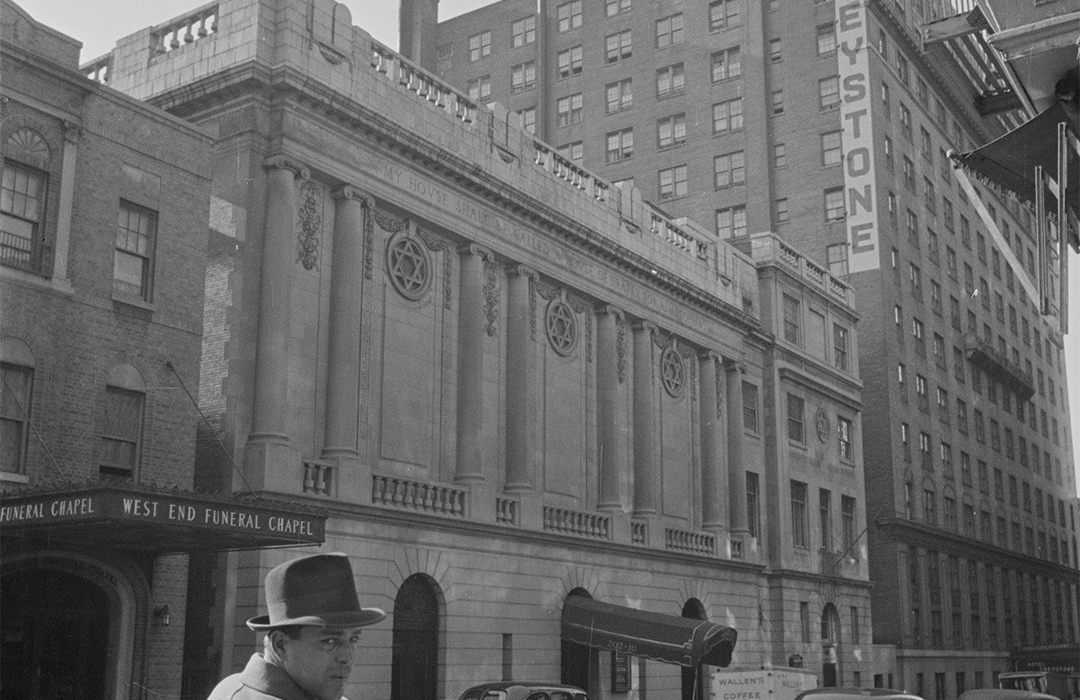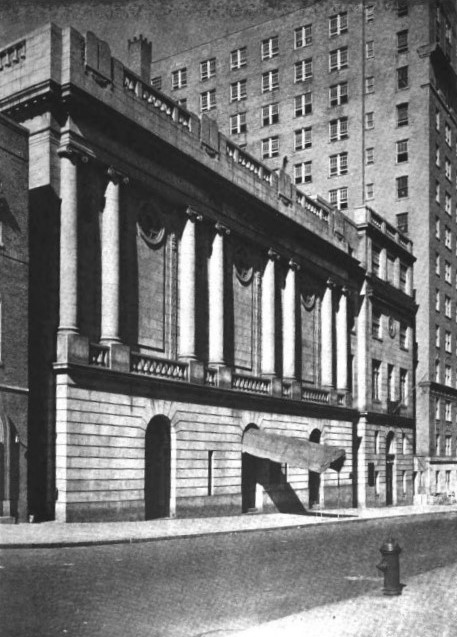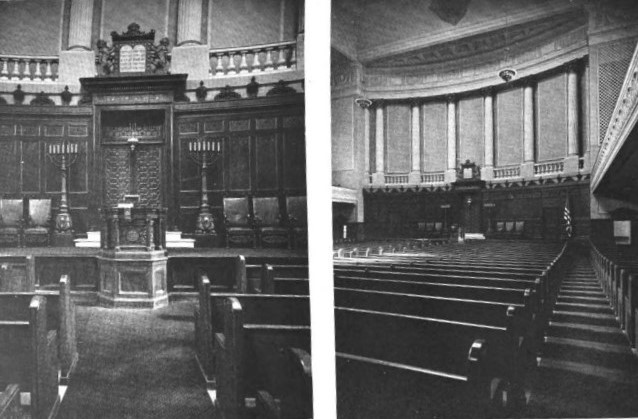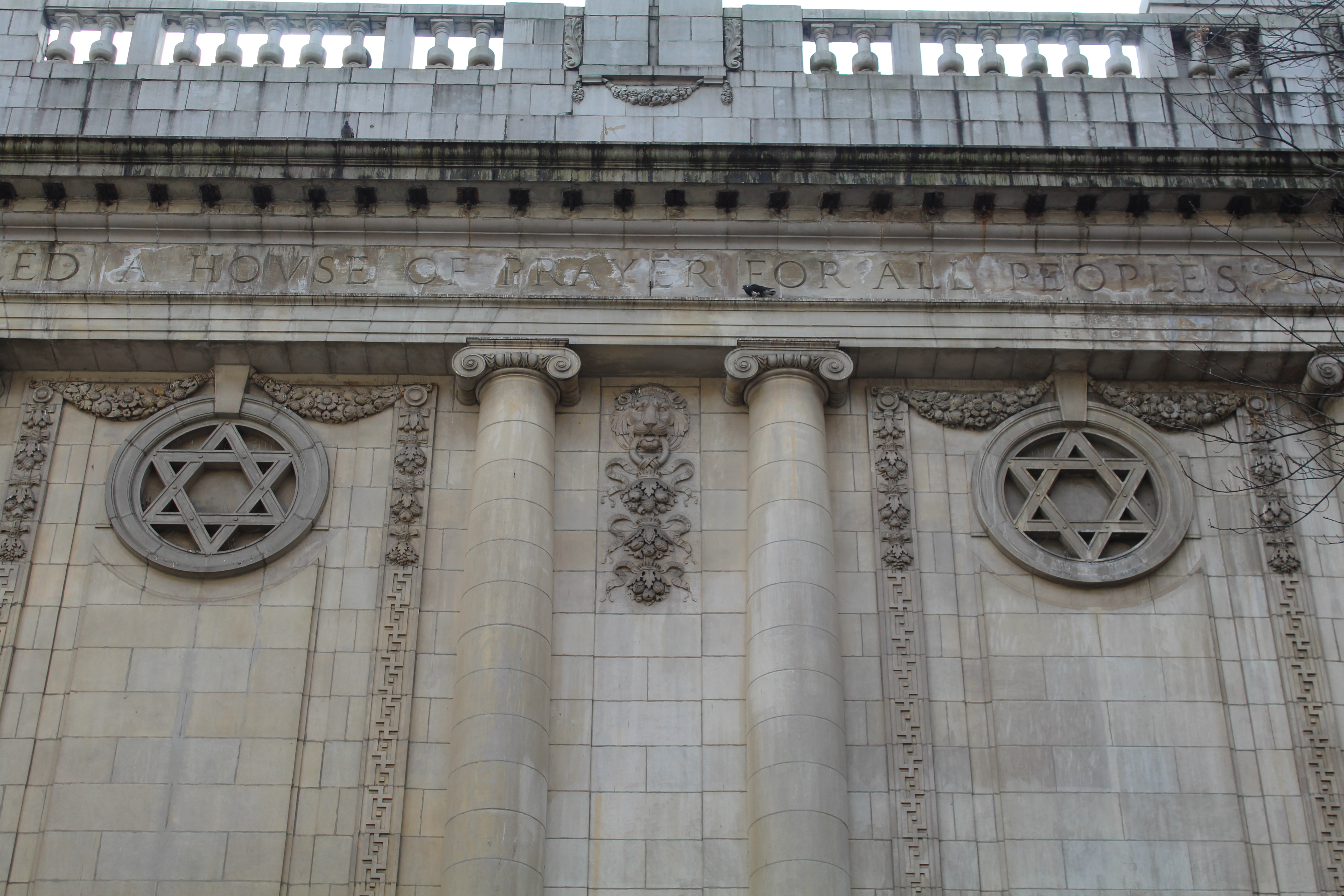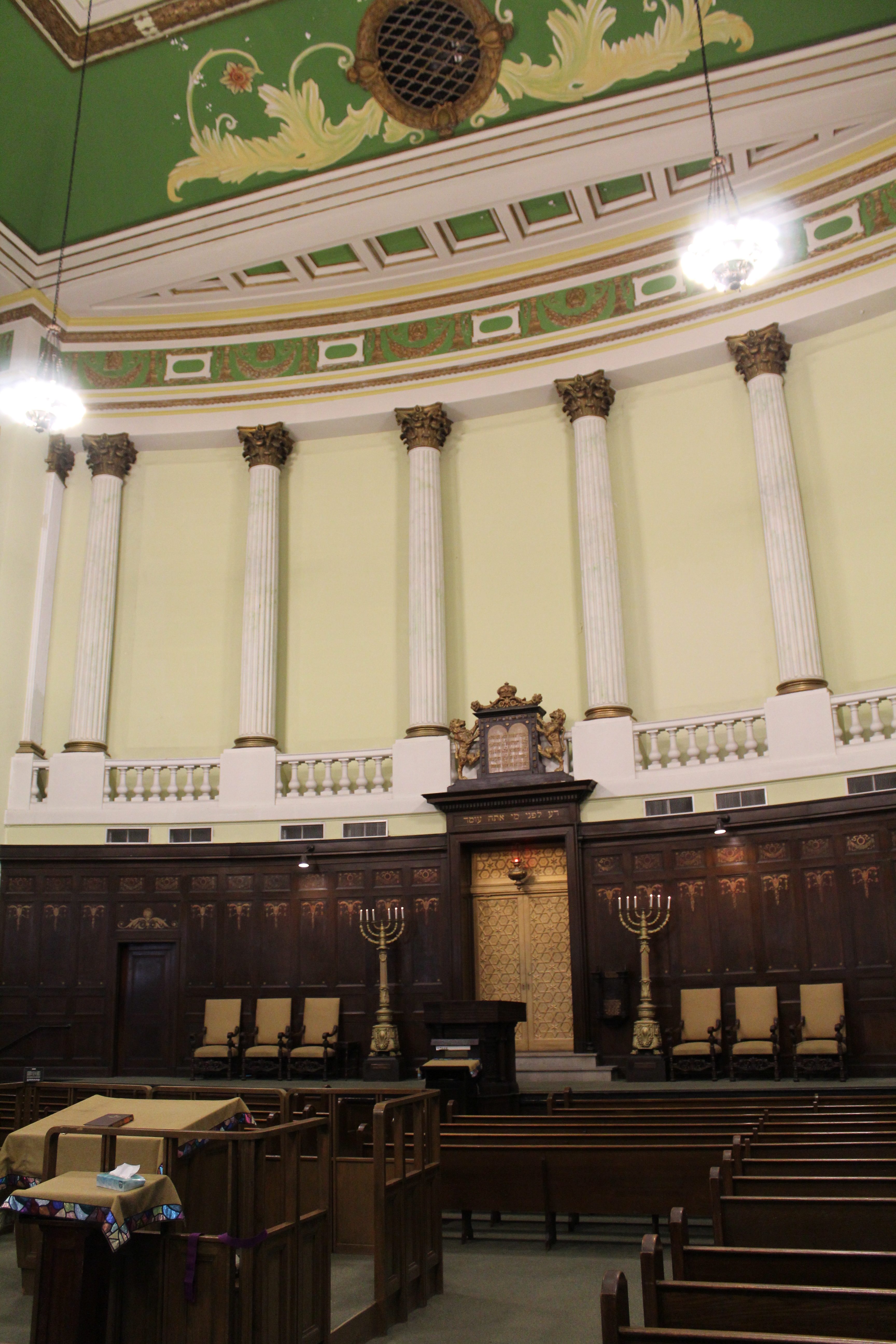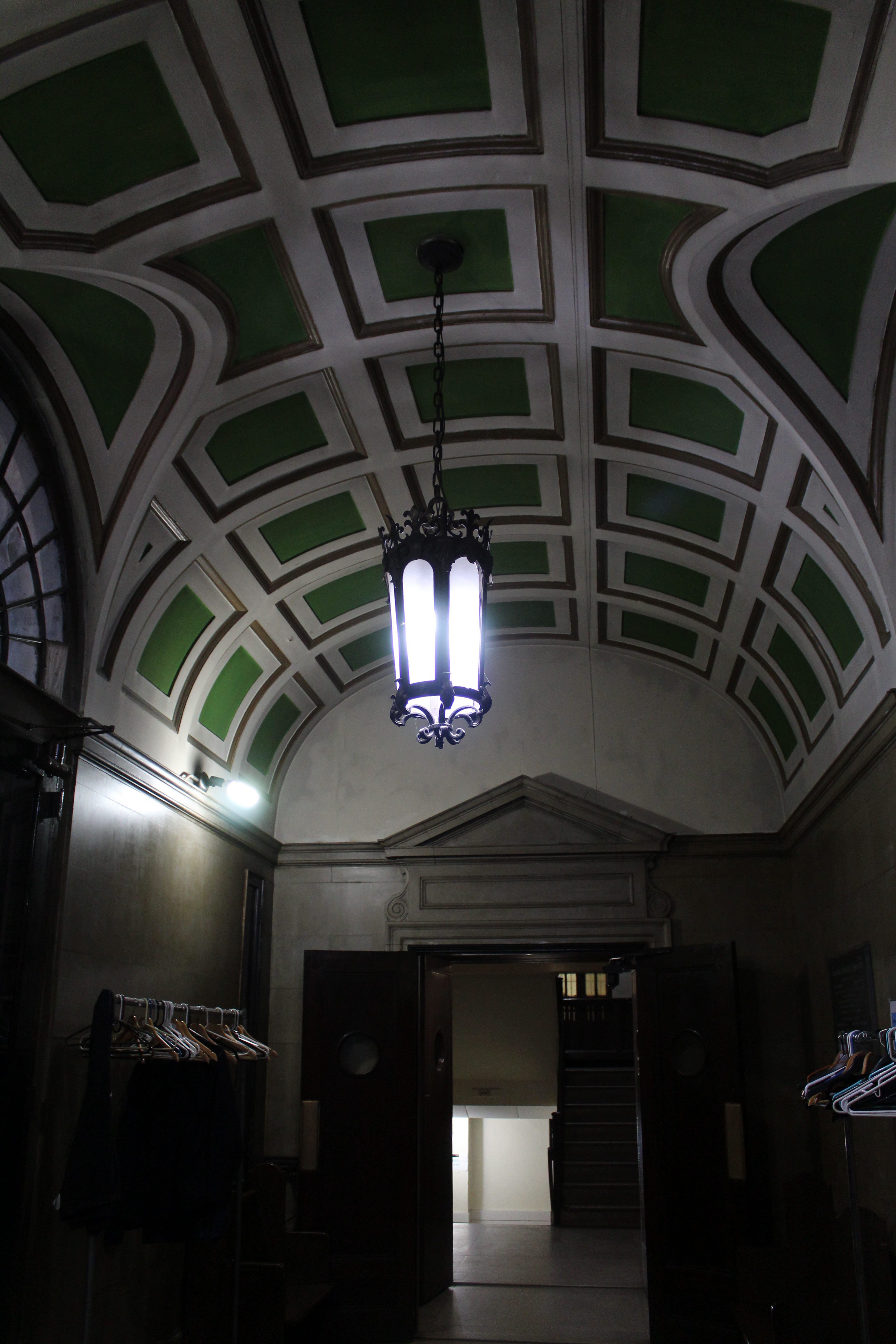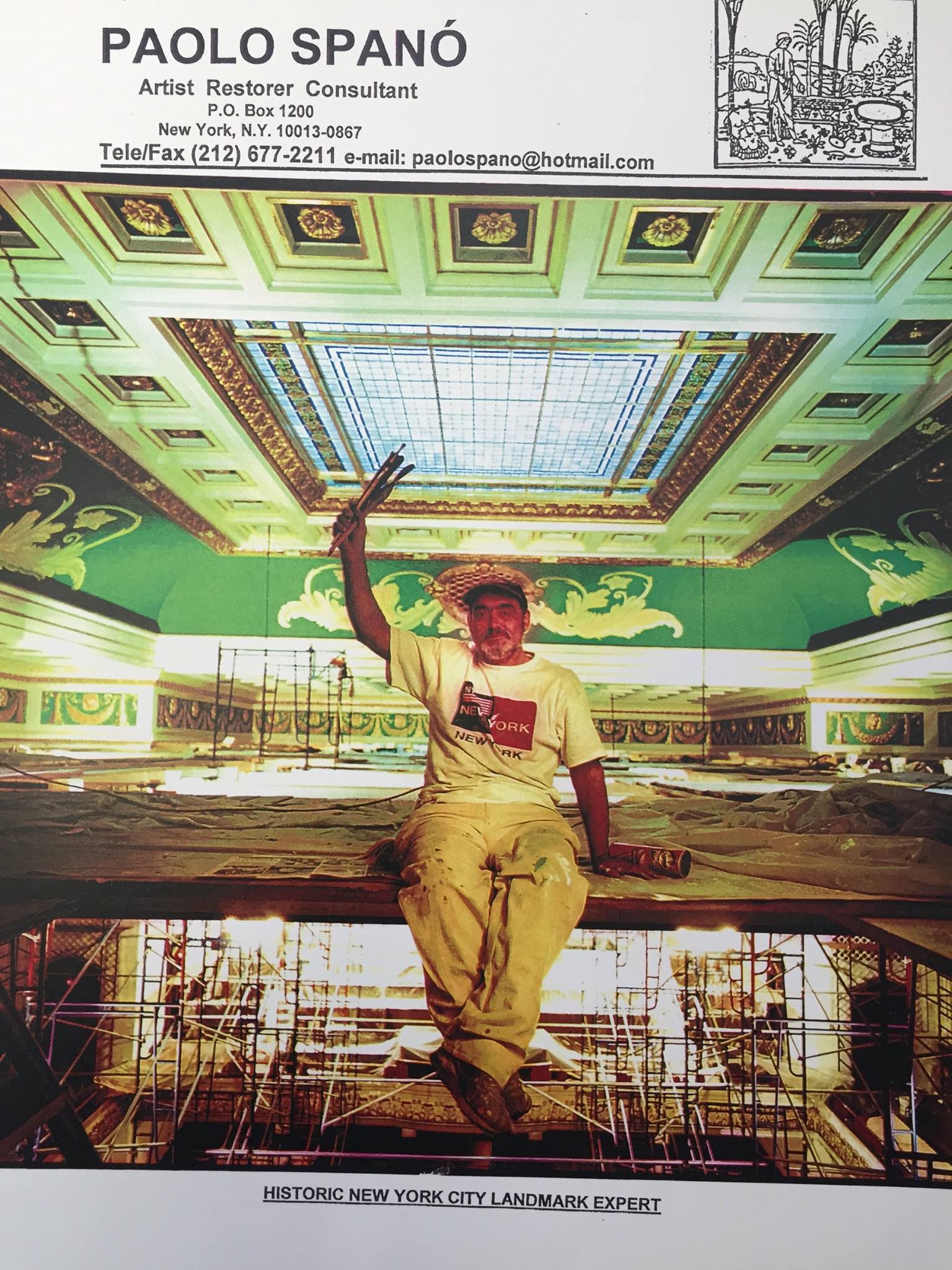210 West 91st Street
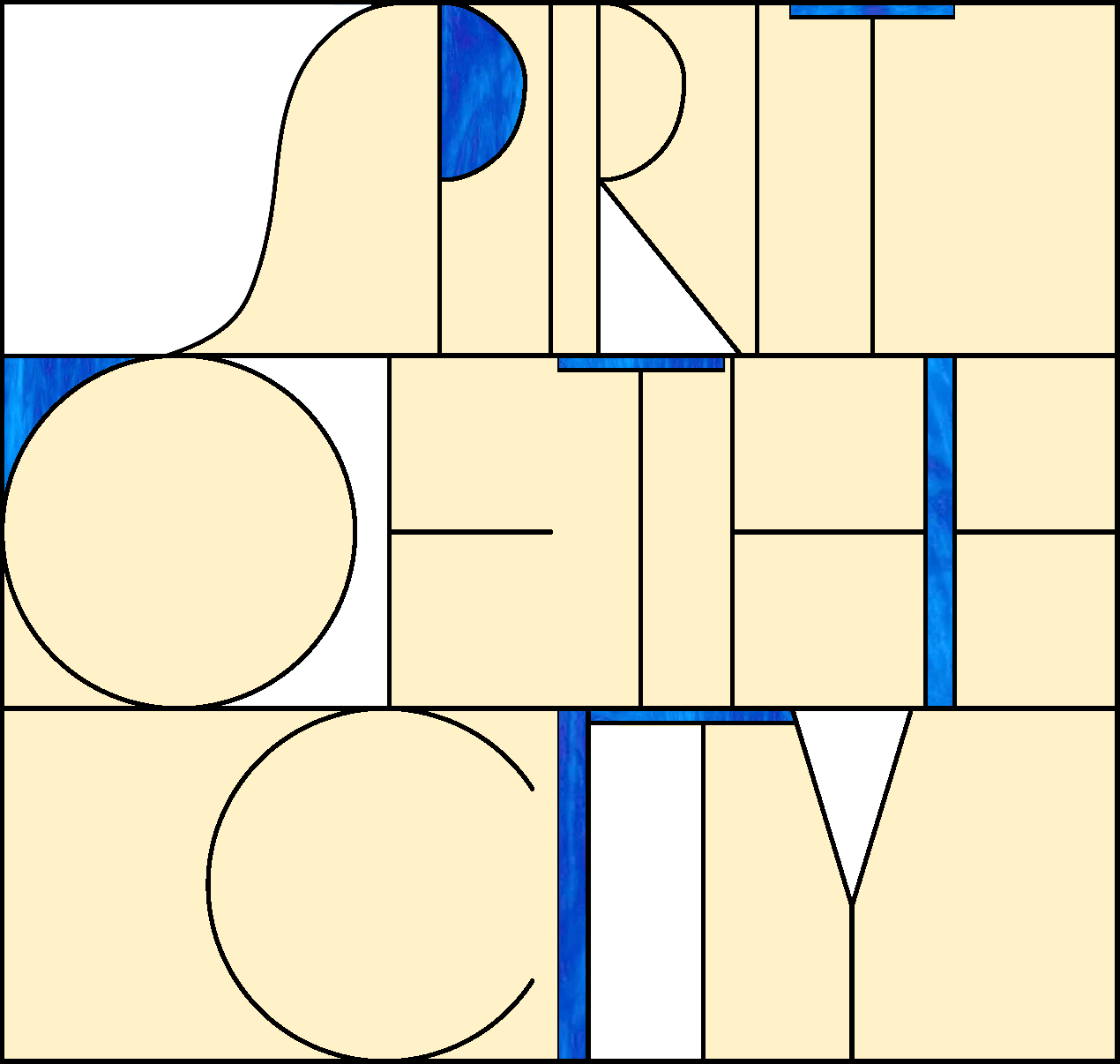
Young Israel of the West Side
210 West 91st Street
by Megan Fitzpatrick
A Tale of Two Congregations
Temple Israel, the former owners of 210 West 91st Street, had many locations prior to settling down on the Upper West Side. The congregation was first gathered in the early 1870s in their humble home above a shop in Harlem when Harlem maintained a large Jewish community. It was here they established themselves as Congregation Yod b’Yod (Hand in Hand). As the congregation grew, so did the places of worship. The Reform group leased a former church on 116th Street and later in 1887 they acquired a site on 5th Avenue and 125th Street which formerly housed Holy Trinity Church, originally built in 1869-1870. It was around this time that the congregation changed its name to Temple Israel of Harlem and also began its foundation for youth outreach initiatives by establishing a school for the congregation’s children.
Temple Israel of Harlem built a sanctuary of their own in 1907 located at 120th and Lenox Avenue, designed by Arnold W. Brunner ‘argued to be one of the best Neo-classical synagogues in Manhattan.’ Temple Israel’s ever-growing Community was committed not only to religious life but working to uplift the Jewish people of the city through the establishment of Temple Israel Sisterhood, a women’s association to help the poor, and a free school for children of East Harlem (NYT, 1907).
The congregation spent twelve short years in their purpose-built sanctuary and today the pantheon-style building is home to Mount Olivet Baptist Church. The congregation moved yet again but this time down to the Upper West Side neighborhood. They temporarily worshiped at the Second Presbyterian Church (Scotch Presbyterian) on 96th Street and Central Park West while new ground broke for their newest site (New York Times, Oct. 5, 1920, p. 8).
Temple Israel was not the first nor the last congregation to move to the Upper West Side neighborhood in the early twentieth century. They set their sights on the southwest corner of Amsterdam Avenue and 91st Street, previously occupied by several garages (New York Times, April 12, 1921, p. 35). The corner plot was later resold. In 1921 plans were filed by the architectural firm of Tachau and Vought for a new purpose-built temple and assembly house at 210 West 91st Street that would cost $500,000 to construct. It was dedicated on September 21, 1922 (NYT). Having changed its name to Temple Israel of New York City in 1924 the congregation continued to grow both in membership and influence. It was also around this time that women were given full equality in congressional life. They grew to an impressive 950 members by 1929.
Its purpose-built community house adjacent to the main sanctuary reflected the congregation’s continual commitment to fostering a sense of community as well as providing educational programs for both adults and children. Temple Israel was headed by the very influential Rabbi William F. Rosenblum for most of the congregation’s period on the Upper West Side, who spoke at length about issues concerning Jewish people in America and abroad (website).
The congregation moved a final time in 1964, this time across Central Park, to build a Brutalist-style synagogue designed by Peter Claman of Schuman & Liechtenstein at 112 East 75th Street. Young Israel of the West Side took over residence at the 91st Street temple to establish an Orthodox place of worship.
Temple Israel was not the first nor the last congregation to move to the Upper West Side neighborhood in the early twentieth century.
Building Description
William G. Tachau was an American architect active in the early to mid-twentieth century. He formed both architectural firms Pitcher & Tachau (1904-1919) and Tachau & Vought (1919-?) and specialized in psychiatric hospitals as well employment in Federal, State, and City during the Great Depression. Not much is known about Vought, however the firm maintained his name even after he left.
The elegant combination of a classical style with Neo-Renaissance elements made from Indiana limestone, featuring a protruding terra cotta cornice and stone balustrade, creates a striking visual in the streetscape. It is one of few religious buildings in New York City with clear symbols of its faith. Star of David symbols cemented in oculi and decorated with carved stone swags are set between pairs of columns that adorn the main facade. Between the column, pairs are bound fruit garlands suspended from lion face symbols. The religious symbols continue with a particularly unique set of four scripture tablets above the cornice.
The entrance hall, which can be reached through tall cast iron gates that still remain today, is entirely of stone effect with an incredible vaulted paneled ceiling. The main sanctuary of the synagogue is dressed in a series of columns and wall reliefs that emulate motifs seen on the exterior. At the top of the sanctuary, the platform, with its central reading desk, is well-designed as the center of attraction, ornamented by several decorative key and leaf motifs.
The community house next door, connected to the main building by only the first floor and the basement level, carefully follows the lines of the main structure indicating their association with one another. This four-story side annex has a high second floor with a Star of David oculus and the fourth floor is topped by a stone balustrade, mimicking its neighbor. “Thou shalt love thy neighbor as thyself”, a line from Leviticus 19:18 is engraved above the second-story window, appropriate for a community house.
Historic Restoration Efforts
Much-needed restoration work of the synagogue was undertaken in the early 2000s. The then almost 80-year-old building had seen some natural deterioration and the dwindling size of the congregation delayed much-needed repair and restoration work. Fortunately, money was raised following a string of good faith and devotion from the community and restoration efforts took place between 2001-2002. Work began first securing the roof and focused on the limestone face of the building. The original cast iron gate from the entrance hall door remained but two entrance doors were replaced with no expense spared to replicate the original wood material and finish.
The Italian restorer and decorative painter, Paolo Spano, was tasked to do extensive restoration work on the interior to return it to its original glory. Years of white paint were peeled back to reveal color. The walls of the sanctuary transformed from gray and severe to a regal green with some added touches of gilding for effect. Work was completed on the platform, the four large chandeliers, and the stained glass windows. The original relief work on the walls was once again visible after years of being hidden away. The adjacent community house had minimal restorative work, maintaining its original wooden multi-pane windows.
The congregation first saw the completed restoration work on the interior at a service following the tragedy which occurred on 9/11. The large crowd was in awe at the sight in front of them – their improved place of worship.
The congregation bounced back from its dwindling numbers in the early part of the century and now boasts 500-600 regular attendees maintaining a strong and proud community-orientated focus, which the place of worship was founded on.
The walls of the sanctuary transformed from gray and severe to a regal green with some added touches of gilding for effect.
Sources:
The American Architect – the Architectural Review, Vol. 125, No. 2427 (Jan. 16, 1924)
Dunlap, David. From Abyssinian to Zion: A Guide to Manhattan’s Houses of Worship. New York: Columbia University Press, 2004.
Olitzky, Kerry M. The American Synagogue: A Historical Dictionary and Sourcebook. Westport, Conn.: Greenwood Press, 1996.
“Jam at Dedication of Temple Israel,” The New York Times (May 18, 1907), p. 7.
“Temple Israel Quits Old Home” New York Times (Oct 5, 1920) p. 8
“Temple Israel Buys Site,” The New York Times (Apr. 12, 1921) p. 35.
“$93,000 is Raised for Temple Israel,” The New York Times (Dec. 4, 1921), p.18
“Temple Israel Dedicated,” The New York Times (Sep. 23, 1922).
“Temple Israel Resells Plot,” The New York Times (Nov. 3, 1921).
Temple Israel website: http://www.templeisraelnyc.org/
Megan Fitzpatrick is the Preservation and Research Director of LANDMARK WEST!

